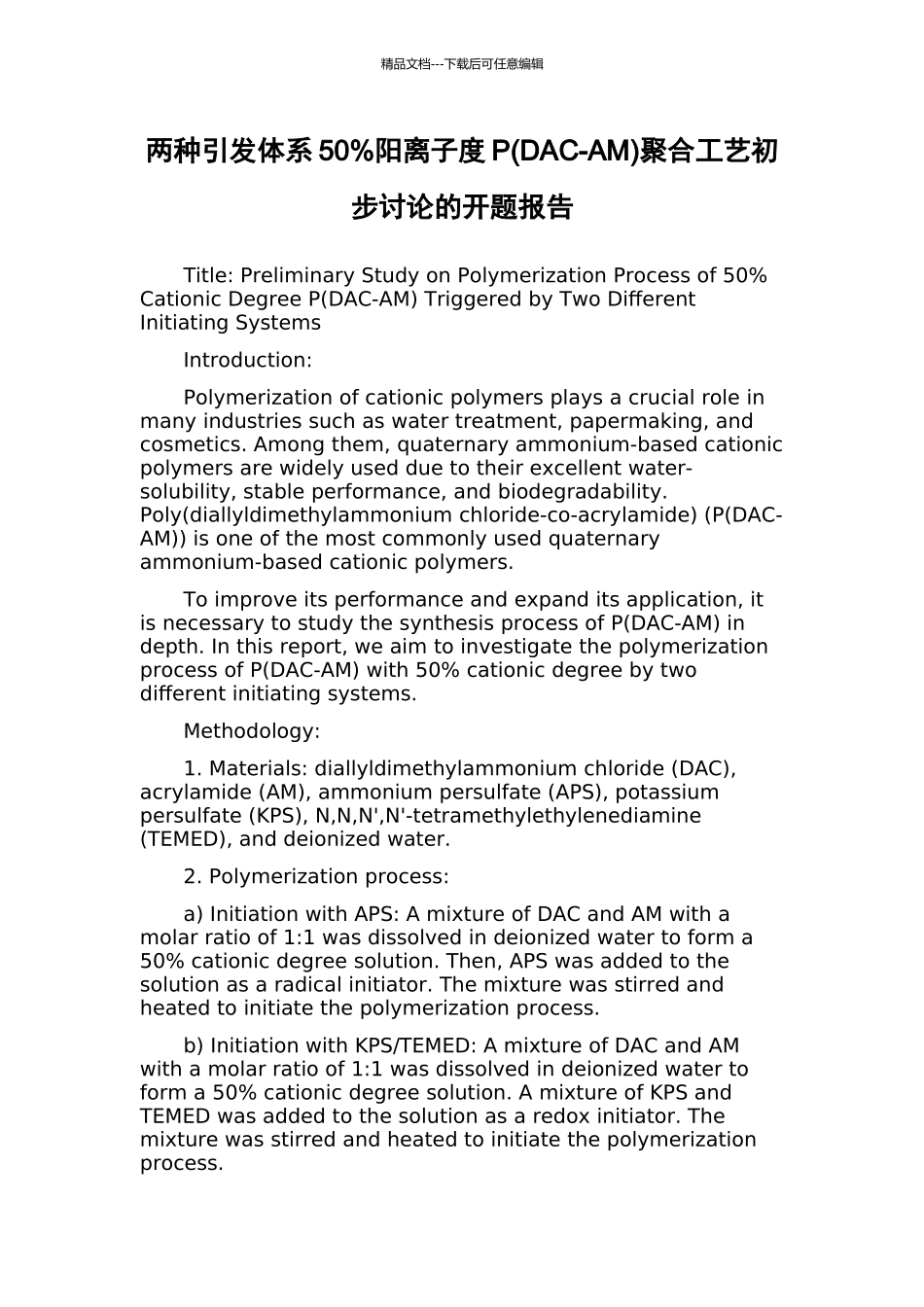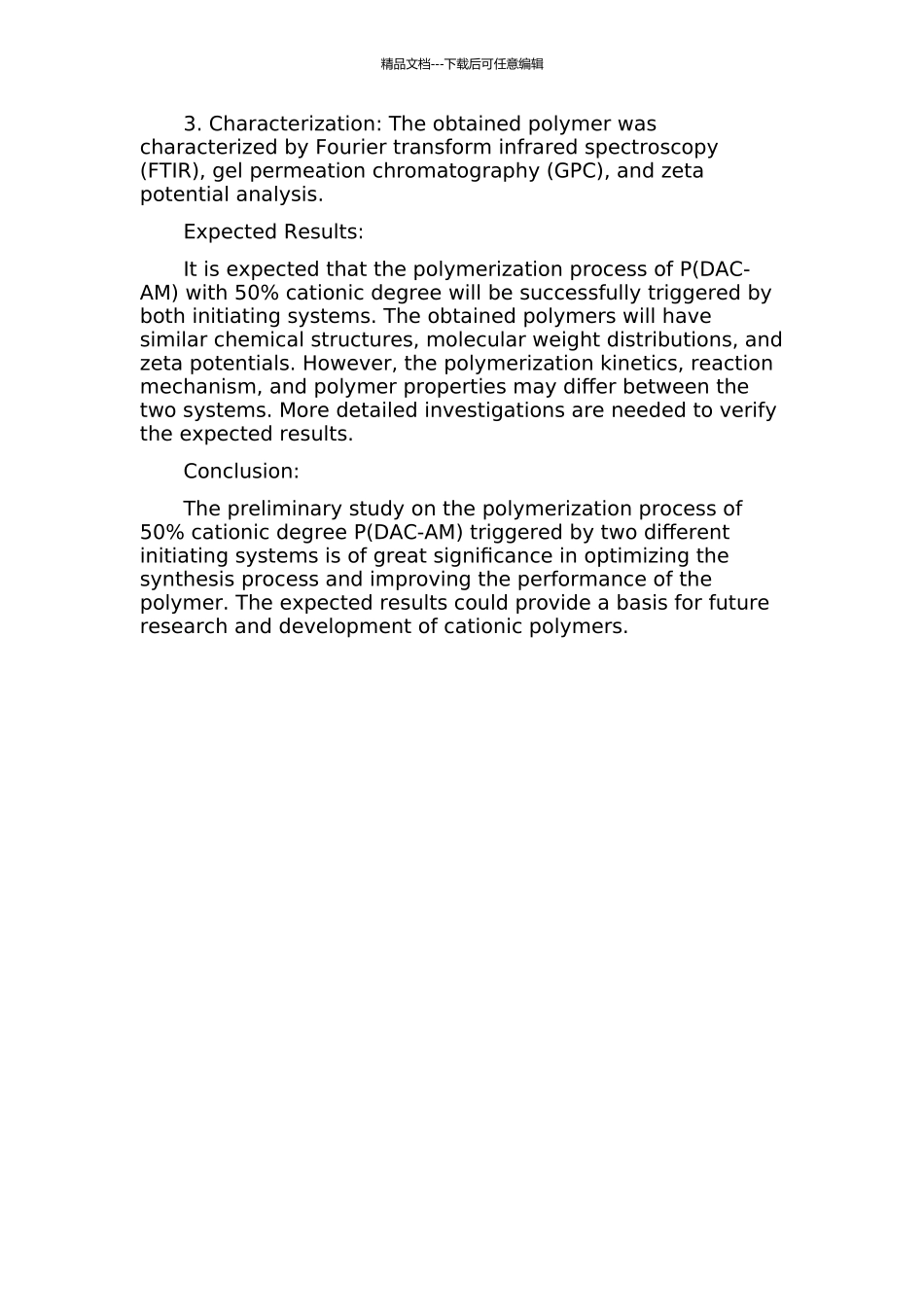精品文档---下载后可任意编辑两种引发体系 50%阳离子度 P(DAC-AM)聚合工艺初步讨论的开题报告Title: Preliminary Study on Polymerization Process of 50% Cationic Degree P(DAC-AM) Triggered by Two Different Initiating SystemsIntroduction:Polymerization of cationic polymers plays a crucial role in many industries such as water treatment, papermaking, and cosmetics. Among them, quaternary ammonium-based cationic polymers are widely used due to their excellent water-solubility, stable performance, and biodegradability. Poly(diallyldimethylammonium chloride-co-acrylamide) (P(DAC-AM)) is one of the most commonly used quaternary ammonium-based cationic polymers.To improve its performance and expand its application, it is necessary to study the synthesis process of P(DAC-AM) in depth. In this report, we aim to investigate the polymerization process of P(DAC-AM) with 50% cationic degree by two different initiating systems.Methodology:1. Materials: diallyldimethylammonium chloride (DAC), acrylamide (AM), ammonium persulfate (APS), potassium persulfate (KPS), N,N,N',N'-tetramethylethylenediamine (TEMED), and deionized water.2. Polymerization process:a) Initiation with APS: A mixture of DAC and AM with a molar ratio of 1:1 was dissolved in deionized water to form a 50% cationic degree solution. Then, APS was added to the solution as a radical initiator. The mixture was stirred and heated to initiate the polymerization process.b) Initiation with KPS/TEMED: A mixture of DAC and AM with a molar ratio of 1:1 was dissolved in deionized water to form a 50% cationic degree solution. A mixture of KPS and TEMED was added to the solution as a redox initiator. The mixture was stirred and heated to initiate the polymerization process.精品文档---下载后可任意编辑3. Characterization: The obtained polymer was characterized by Fourier transform infrared spectroscopy (FTIR), gel permeation chromatography (GPC), and zeta potential analysis.Expected Results:It is expected that the polymerization process of P(DAC-AM) with 50% cationic degree will be successfully triggered by both initiating systems. The obtained polymers will have similar chemical structures, molecular weight distributions, and zeta potentials. However, the polymerization kinetics, reaction mechanism, and polymer properties may differ between the two systems. More detailed investigations are needed to verify the expected results.Conclusion:The preliminary study on the polymerization process of 50% cationic degree P(DAC-AM) triggered by two different initiating systems is of great significance in optimizing the synthesis process and improving the performance of the polymer. The expected results could provide a basis for future research and development of cationic polymers.

